 Once upon a time I was ready to give up on New World Chardonnay. More than anything though it was really California Chardonnay I’d grown weary of. So many of the wines I tasted were overburdened with oak to the point of blunting the fruit. The litany of jokes made in tasting rooms and elsewhere about these wines could easily fill a book. I’m not sure anyone is printing joke books these days. If they were though there’s lots of material. It got to the point where I found it tiresome to even try new Chardonnays. Many of them, were high scored, and well regarded, yet there was a seeming avalanche of sawdust in my mouth. So I drank mostly Chablis, when I had the chance, and when I felt adventurous I’d try one from California.
Then one incredibly fateful day I made my first visit to Swanson Vineyards Salon in Napa Valley. While I liked the first wine they poured Rosato, I was dubious when then Salonnier Shawn Larue said the next wine was Chardonnay. I must have made a face because Shawn assured me that what I was about to taste was not a typical over oaked wine that was in fashion for many years. I thanked him for mentioning it but inside I thought “we’ll see about that.” From the first sip the Swanson Chardonnay was nothing short of a revelation. The fruit starred gloriously and there was complexity to spare. “That’s amazing,” were the first words I recall uttering after the very first sips I ever took of Swanson Chardonnay. More than anything it reminded me of a fine Chablis. I Joined their wine club soon after in large part so I could have guaranteed access to the Chardonnay. It’s only made in small quantities and if there’s any left after the wine club gets their allotment you can get some through the Salon. I wasn’t taking that chance. I’ve come to love the Swanson portfolio of wines in general. The Chardonnay though, for my money, there isn’t a finer one in Napa Valley.
Once upon a time I was ready to give up on New World Chardonnay. More than anything though it was really California Chardonnay I’d grown weary of. So many of the wines I tasted were overburdened with oak to the point of blunting the fruit. The litany of jokes made in tasting rooms and elsewhere about these wines could easily fill a book. I’m not sure anyone is printing joke books these days. If they were though there’s lots of material. It got to the point where I found it tiresome to even try new Chardonnays. Many of them, were high scored, and well regarded, yet there was a seeming avalanche of sawdust in my mouth. So I drank mostly Chablis, when I had the chance, and when I felt adventurous I’d try one from California.
Then one incredibly fateful day I made my first visit to Swanson Vineyards Salon in Napa Valley. While I liked the first wine they poured Rosato, I was dubious when then Salonnier Shawn Larue said the next wine was Chardonnay. I must have made a face because Shawn assured me that what I was about to taste was not a typical over oaked wine that was in fashion for many years. I thanked him for mentioning it but inside I thought “we’ll see about that.” From the first sip the Swanson Chardonnay was nothing short of a revelation. The fruit starred gloriously and there was complexity to spare. “That’s amazing,” were the first words I recall uttering after the very first sips I ever took of Swanson Chardonnay. More than anything it reminded me of a fine Chablis. I Joined their wine club soon after in large part so I could have guaranteed access to the Chardonnay. It’s only made in small quantities and if there’s any left after the wine club gets their allotment you can get some through the Salon. I wasn’t taking that chance. I’ve come to love the Swanson portfolio of wines in general. The Chardonnay though, for my money, there isn’t a finer one in Napa Valley.
I was recently going through my cellar and realized I had four vintages of the Chardonnay on hand. It was obvious that the only thing to do was invite some friends over for a vertical tasting. What follows are some of my impressions about these wines and how they’re currently tasting.
The Swanson Chardonnay is available through the Salon in Rutherford. The suggested retail price for the current vintage (2008) is $36.
Swanson Vineyards 2005 Salon Chardonnay – This wine has changed remarkably in the time since it was released. Much of the fruit has dropped off at this point. The spice and mineral elements which were always present have pushed to the fore front. This now lean, mineral laden wine turned out to be the favorite of most during the vertical tasting. A nice showcase for the potential longevity of well made, balanced, white wines.
Swanson Vineyards 2006 Salon Chardonnay – This wine is definitely transitioning at this time. The spice component is present as are hints of minerals. However they’re not as prominent as on the 2005. There is more fruit present right now. I’ll be curious to see how it develops further over the next year and if it gets to the second life the 2005 is currently enjoying.
Swanson Vineyards 2007 Salon Chardonnay – Of the four vintages this is probably the one drinking at closest to its peak efficacy right now. It’s all about personal taste of course but the 2007 still now has all the glorious fruit this Chardonnay features in its youth. There’s plenty of complexity as well with spice, mineral notes and the great length this wine traditionally features. An excellent vintage of a very consistent wine in its peak drinking window.
Swanson Vineyards 2008 Salon Chardonnay – This is the current vintage of this wine, released this past August. Not surprisingly this vintage currently has the biggest fruit of the bunch. Gentle hints of butter are present along with the classic spice elements. Mineral notes are just starting to eek out of this wine and I suspect they’ll become much more prominent over time. While it’s delicious now, history tells me that to my taste I’m going to like this wine even more in about 5-6 months.
Vertical tastings can be fascinating and instructive. This one was no different. While everyone had their favorites, for a variety of reasons, there was some consensus. Regardless of how much the older vintages have evolved, the house style, we agreed was evident throughout. While age and of course vintage variation play a strong role, the consistent quality of the Swanson Salon Chardonnay from year to year was on display.
So the moral of the story here is two-fold. First of all if you like a varietal, don’t give up on it if you run across some examples you don’t like. You may eventually find one you love. The tide may also shift as it has with California Chardonnay. Of course the oak laden butter bombs are still out there. Thankfully though there are less then of them than before. The other part of the story? If you like excellent Chardonnay, that has fruit, complexity, and a good bit of longevity, do what you have to and get your hands on a bottle of Swanson Salon Chardonnay.
Please take a moment to vote for my blog.
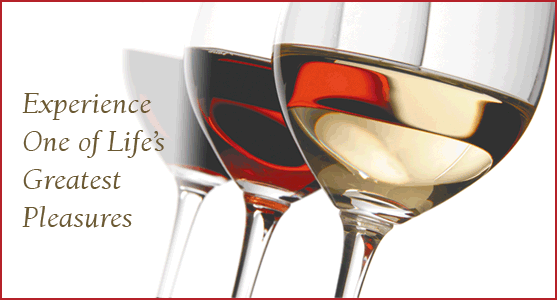 The 3rd annual NY Wine Expo is coming next month. I've attended the first two and found it to be a large scale wine event worth attending for wine lovers. Read my review of the 2009 edition here, and 2008 here. Readers of this site can save $10 on either Friday or Saturday tickets by using the code: GABESVIEW. Specific event details follow:
The 3rd annual NY Wine Expo is coming next month. I've attended the first two and found it to be a large scale wine event worth attending for wine lovers. Read my review of the 2009 edition here, and 2008 here. Readers of this site can save $10 on either Friday or Saturday tickets by using the code: GABESVIEW. Specific event details follow:
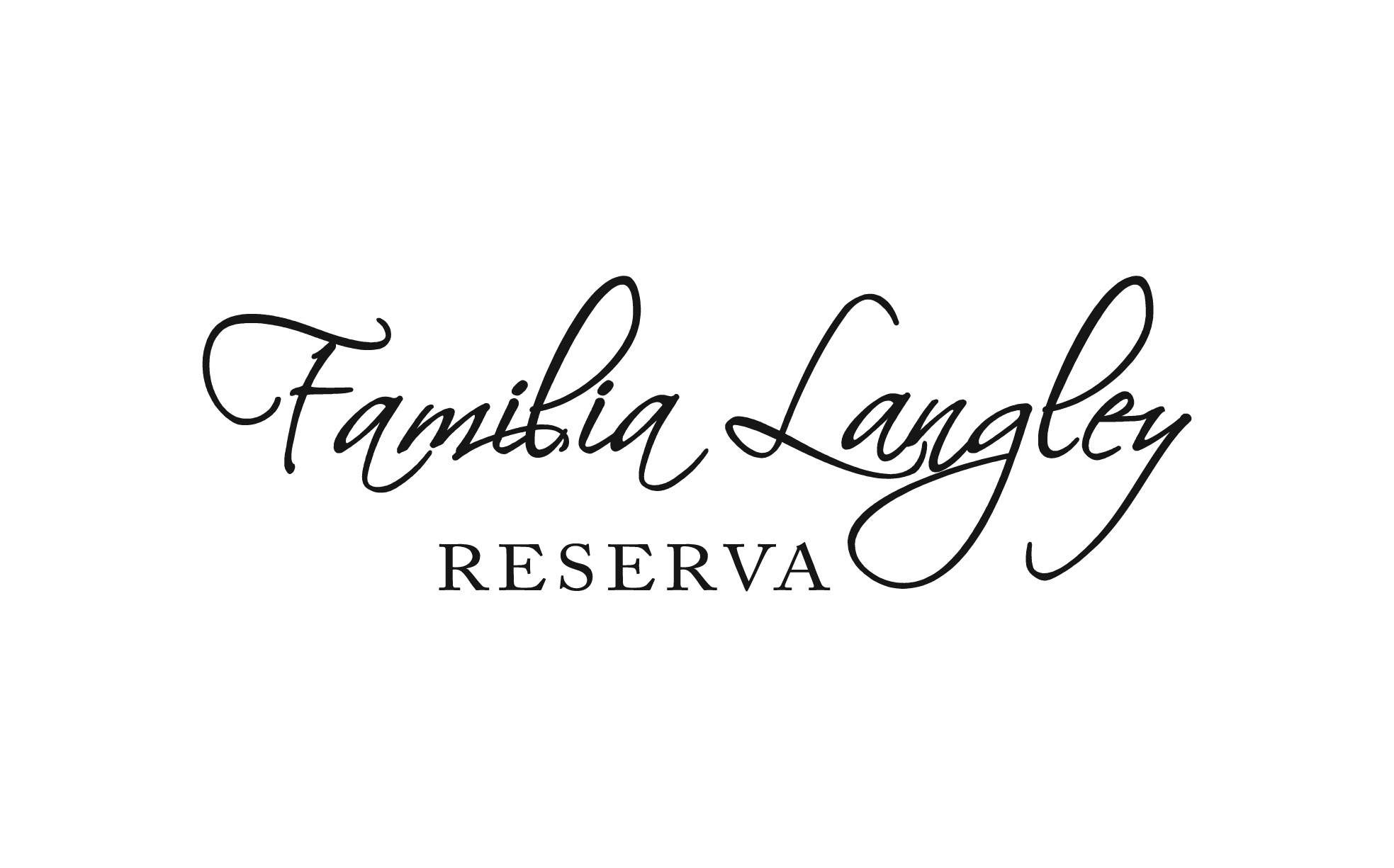 It was just about a year ago that I first tasted the offerings from Argentine producer
It was just about a year ago that I first tasted the offerings from Argentine producer 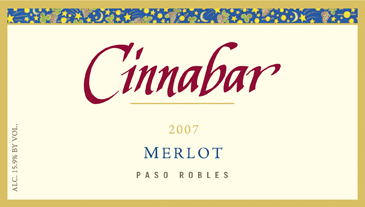 Merlot is easily one of the most maligned varietals of the last decade. The film Sideways did little to help its cause. But in my opinion what hurt Merlot’s reputation more was the sea of insipid examples out there. For every excellent Merlot there’s one that’s sweet, flabby and worst of all innocuous. There’s nothing more discouraging than drinking a wine and being unable to distinguish what varietal it is. Thankfully though, along with the solid examples that have always been out there, the tide seems to have shifted a bit. More and more of the Merlot’s I’ve tasted, in a wide array of price categories, from all over the world, actually taste like what they are. Today I’ll look at an example from
Merlot is easily one of the most maligned varietals of the last decade. The film Sideways did little to help its cause. But in my opinion what hurt Merlot’s reputation more was the sea of insipid examples out there. For every excellent Merlot there’s one that’s sweet, flabby and worst of all innocuous. There’s nothing more discouraging than drinking a wine and being unable to distinguish what varietal it is. Thankfully though, along with the solid examples that have always been out there, the tide seems to have shifted a bit. More and more of the Merlot’s I’ve tasted, in a wide array of price categories, from all over the world, actually taste like what they are. Today I’ll look at an example from  Once upon a time I was ready to give up on New World Chardonnay. More than anything though it was really California Chardonnay I’d grown weary of. So many of the wines I tasted were overburdened with oak to the point of blunting the fruit. The litany of jokes made in tasting rooms and elsewhere about these wines could easily fill a book. I’m not sure anyone is printing joke books these days. If they were though there’s lots of material. It got to the point where I found it tiresome to even try new Chardonnays. Many of them, were high scored, and well regarded, yet there was a seeming avalanche of sawdust in my mouth. So I drank mostly Chablis, when I had the chance, and when I felt adventurous I’d try one from California.
Then one incredibly fateful day I made my first visit to
Once upon a time I was ready to give up on New World Chardonnay. More than anything though it was really California Chardonnay I’d grown weary of. So many of the wines I tasted were overburdened with oak to the point of blunting the fruit. The litany of jokes made in tasting rooms and elsewhere about these wines could easily fill a book. I’m not sure anyone is printing joke books these days. If they were though there’s lots of material. It got to the point where I found it tiresome to even try new Chardonnays. Many of them, were high scored, and well regarded, yet there was a seeming avalanche of sawdust in my mouth. So I drank mostly Chablis, when I had the chance, and when I felt adventurous I’d try one from California.
Then one incredibly fateful day I made my first visit to  There’s something about Pinot Noir that can be downright inspirational when it’s made right. When the fruit is allowed to shine and enhanced rather than burdened by oak and its purely Pinot it can be quite magical. At least I know that’s how I feel about Pinot. While I rarely turn down the opportunity to sample one, my expectations are tempered with the knowledge that it takes a lot to impress my palate when it comes to this grape. Today I’m going to look at a brand new release from
There’s something about Pinot Noir that can be downright inspirational when it’s made right. When the fruit is allowed to shine and enhanced rather than burdened by oak and its purely Pinot it can be quite magical. At least I know that’s how I feel about Pinot. While I rarely turn down the opportunity to sample one, my expectations are tempered with the knowledge that it takes a lot to impress my palate when it comes to this grape. Today I’m going to look at a brand new release from 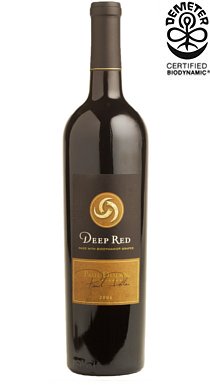 Over the last year or two I’ve had more and more wines from Mendocino County in California. And I have to say that I’m finding quite a few that I enjoy. So when the opportunity presents itself to taste one I haven’t had before I jump at the chance. Such was the case with this blend from
Over the last year or two I’ve had more and more wines from Mendocino County in California. And I have to say that I’m finding quite a few that I enjoy. So when the opportunity presents itself to taste one I haven’t had before I jump at the chance. Such was the case with this blend from  A few months back I was impressed with a trio of Pinot Noirs I tasted from
A few months back I was impressed with a trio of Pinot Noirs I tasted from 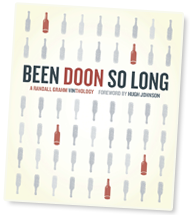 Every business, sport, and industry has game changers. These are folks who either set the bar at a new level in their vocation or innovate so many changes that they influence what comes after them. In the world of wine, Randall Grahm is such a person. Whether it’s his pioneering affection for Rhone varietals and the like long before others in CA truly embraced them or his decision to switch to screw caps earlier in the game than most, he’s been a game changer. And now he’s got a book.
Every business, sport, and industry has game changers. These are folks who either set the bar at a new level in their vocation or innovate so many changes that they influence what comes after them. In the world of wine, Randall Grahm is such a person. Whether it’s his pioneering affection for Rhone varietals and the like long before others in CA truly embraced them or his decision to switch to screw caps earlier in the game than most, he’s been a game changer. And now he’s got a book.
 Blended wines can be particularly interesting. This is especially true in the case of a wine like
Blended wines can be particularly interesting. This is especially true in the case of a wine like 
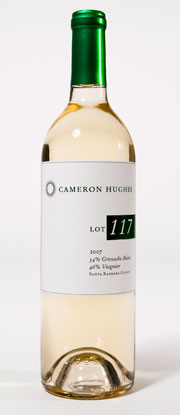 This year I’ve looked at several wines from négociant
This year I’ve looked at several wines from négociant  Sometimes a single word evokes a myriad of thoughts and images. In this case that word is Chianti. Most wine drinkers recognize this as an Italian wine. But depending on how deeply immersed in wine one is, not everyone also realizes that’s it’s a region in Italy. Just about everything in European wine is based on area of origination. That includes what grapes can go into local wines. In Chianti of course as with numerous other areas of Italy, Sangiovese is the predominant grape.
Sometimes a single word evokes a myriad of thoughts and images. In this case that word is Chianti. Most wine drinkers recognize this as an Italian wine. But depending on how deeply immersed in wine one is, not everyone also realizes that’s it’s a region in Italy. Just about everything in European wine is based on area of origination. That includes what grapes can go into local wines. In Chianti of course as with numerous other areas of Italy, Sangiovese is the predominant grape.  It’s good to have some go to things in life. When it comes to wine there are some producers that I look to for a variety of reasons. Sometimes it’s simply quality. Other times it’s value and availability.
It’s good to have some go to things in life. When it comes to wine there are some producers that I look to for a variety of reasons. Sometimes it’s simply quality. Other times it’s value and availability.  The last wine today is the Valentin Bianchi 2008 Elsa Cabernet Sauvignon. Fruit for this wine was also sourced at the Family’s original home vineyards. This selection is 100% Cabernet Sauvignon. This wine had minimal oak aging. 10,000 cases of this 2008 vintage were imported and the suggested retail price is $8.99.
The last wine today is the Valentin Bianchi 2008 Elsa Cabernet Sauvignon. Fruit for this wine was also sourced at the Family’s original home vineyards. This selection is 100% Cabernet Sauvignon. This wine had minimal oak aging. 10,000 cases of this 2008 vintage were imported and the suggested retail price is $8.99. Washington State is probably best known for Syrah. Many of those come from Walla Walla. Columbia Valley however emerged on the national scene first and there are quite a few varietals that thrive there. Merlot, Riesling and Cabernet Sauvignon are the first that come to mind. Today I'll look at a Riesling from the Wahluke Wine Company.
The 2oo8
Washington State is probably best known for Syrah. Many of those come from Walla Walla. Columbia Valley however emerged on the national scene first and there are quite a few varietals that thrive there. Merlot, Riesling and Cabernet Sauvignon are the first that come to mind. Today I'll look at a Riesling from the Wahluke Wine Company.
The 2oo8  New Zealand and Pinot Noir are starting to become synonymous to wine lovers. That’s a good thing because there are a lot of lovely examples coming out of this country. For a long time their Pinot’s were second to their Sauvignon Blancs on our store shelves and in our minds. And while Sauvignon Blanc from New Zealand is still certainly a major player, the varietal itself (delicious as it can be) doesn’t inspire quite the same sort of passion that Pinot Noir does. Today I’ll look at an example from
New Zealand and Pinot Noir are starting to become synonymous to wine lovers. That’s a good thing because there are a lot of lovely examples coming out of this country. For a long time their Pinot’s were second to their Sauvignon Blancs on our store shelves and in our minds. And while Sauvignon Blanc from New Zealand is still certainly a major player, the varietal itself (delicious as it can be) doesn’t inspire quite the same sort of passion that Pinot Noir does. Today I’ll look at an example from  I stood outside of Cipriani on Wall Street waiting for my party companion. They had set up a tent in front of the entrance lined with tables, and women sitting about 3 feet from each other with lists of guests in alphabetical order.
I stood outside of Cipriani on Wall Street waiting for my party companion. They had set up a tent in front of the entrance lined with tables, and women sitting about 3 feet from each other with lists of guests in alphabetical order. A lot of people I know drink New World Cabernet Sauvignon and Merlot with great regularity. When it comes to Old World examples many friends I know seem a bit timid. There is definitely a perception out there that French and Italian wines specifically are very expensive. And while there are certainly lots of well regarded and highly priced wines out there, both countries features many excellent wines that are affordable to wide audiences for everyday drinking. Today I’ll look at such a wine from Bordeaux.
The Château Larose-Trintaudon Haut-Médoc 2004 is a blend of Cabernet Sauvignon (60%) and Merlot (40%). Barrel aging occurred in 100% French oak. The suggested retail price for this wine is $17.95
A lot of people I know drink New World Cabernet Sauvignon and Merlot with great regularity. When it comes to Old World examples many friends I know seem a bit timid. There is definitely a perception out there that French and Italian wines specifically are very expensive. And while there are certainly lots of well regarded and highly priced wines out there, both countries features many excellent wines that are affordable to wide audiences for everyday drinking. Today I’ll look at such a wine from Bordeaux.
The Château Larose-Trintaudon Haut-Médoc 2004 is a blend of Cabernet Sauvignon (60%) and Merlot (40%). Barrel aging occurred in 100% French oak. The suggested retail price for this wine is $17.95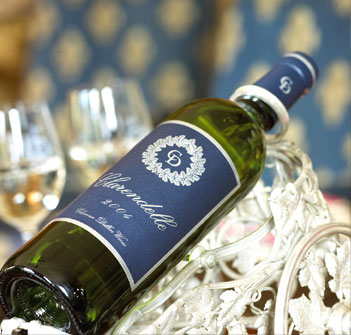 Wines from Europe are often intimidating to the average US consumer. Sometimes it’s due to perceived cost concerns, other times it’s due to confusion over labeling. The truth is that there are a lot of great wines from all over Europe that are very reasonably priced and offer similar quality to price ratios as new world counterparts do. Today I’m going to look at a white wine from the Bordeaux region of France.
This 2006
Wines from Europe are often intimidating to the average US consumer. Sometimes it’s due to perceived cost concerns, other times it’s due to confusion over labeling. The truth is that there are a lot of great wines from all over Europe that are very reasonably priced and offer similar quality to price ratios as new world counterparts do. Today I’m going to look at a white wine from the Bordeaux region of France.
This 2006 
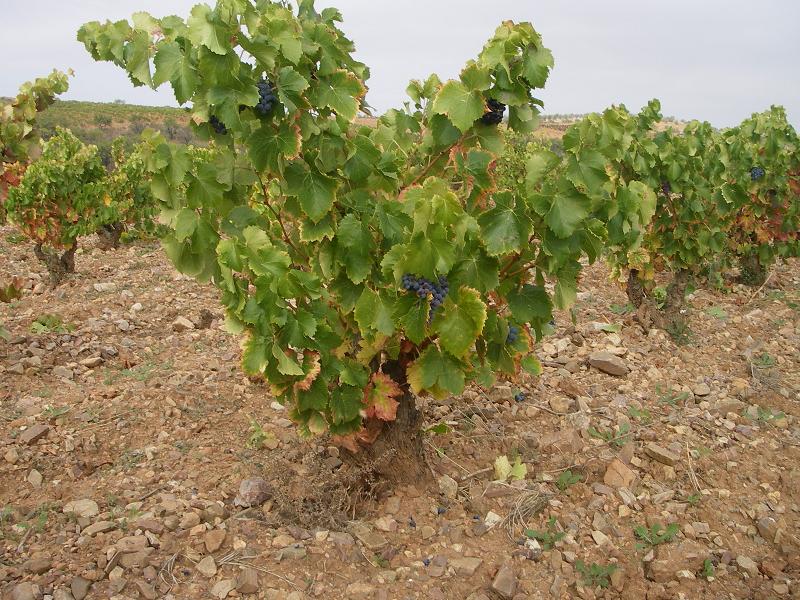
 In 2007, in addition to increasing the Rodney Strong portfolio of wines under their Estate name, proprietor Tom Klein added longtime Sonoma County Winery
In 2007, in addition to increasing the Rodney Strong portfolio of wines under their Estate name, proprietor Tom Klein added longtime Sonoma County Winery